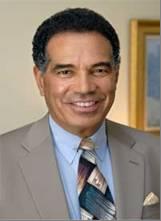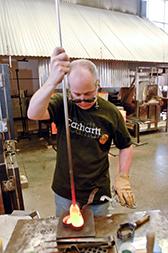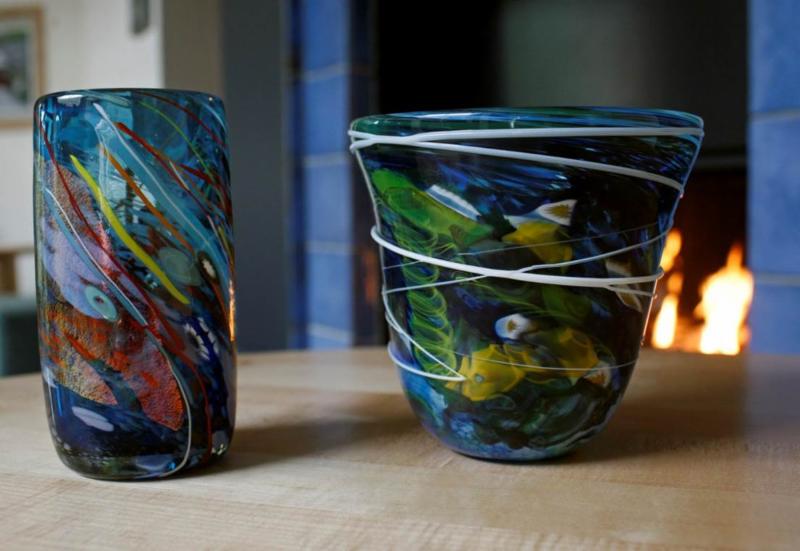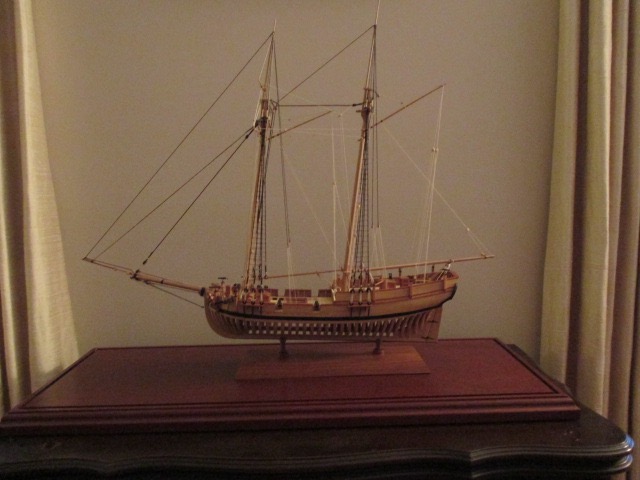|
On the Board of Directors...

W
hen Howard Blanchette was a boy, he went to Union United Church every Sunday. It was the only black church in Montreal, Canada. After services a congregation member named Mrs. Watkins used to ask the young man how he was doing in school. He said he was doing well. "You got to bring it!" she told him. "You got to bring it!"
Years later, as a graduate of McGill University Medical School, Blanchette returned to the church. Sure enough, Mrs. Watkins-by then blind-was waiting outside when he left the service. A friend introduced him to her as "Dr. Blanchette." She smiled. "You brung it!" she said. "You brung it!"
The seven-year member of the ABOG board has "brung" his talents and leadership to numerous positons as he has traversed the country. Tired of Canadian winters, he did his internship and residency at the University of Southern California Medical Center in Los Angeles. He spent 20 years on the faculty there and is Emeritus Clinical Professor of Obstetrics and Gynecology.
For 20 years, Dr. Blanchette was in private practice as a specialist in obstetrics and gynecology in Berkeley, California. At this time, there were two hospitals in Berkeley and the city hospital Herrick went bankrupt. Dr. Blanchette convinced the CEO of the other hospital, Alta Bates Hospital, to financially support the formation of an underserved prenatal clinic at Herrick Hospital (which had closed), but was still structurally intact.
He also was able to convince the Mayor and City Council of Berkeley to financially support the formation of this underserved prenatal clinic which was staffed by midwives, a social worker, and a dietician, supervised by Dr. Blanchette's private practice group in Berkeley. Over the years, the clinical outcomes at this clinic were comparable to those of Dr. Blanchette's private practice group, despite the fact that many of the patients were homeless and chemically addicted when they began prenatal care.
During his years in Berkeley, Dr. Blanchette, along with Alta Bates Hospital, formed a large multi-specialty group called the Alta Bates Medical Group which secured capitated contracts from third-party payers. Over the next five years, the group was successful taking care of patients under capitation. Dr. Blanchette was President of the Pacific Coast Fertility Society and the President of the San Francisco Gynecological Society in 1991. He also presided over the California Academy of Medicine and was a member of the Pacific Coast ObGyn Society.
In 1996, because of a desire to be a full-time academician and for family reasons, Dr. Blanchette left private practice and secured a position as a full-time Chair of Obstetrics and Gynecology at Metro West Medical Center in Framingham, Massachusetts, a Harvard and Tufts teaching hospital. After four years, Dr. Blanchette joined the Yale faculty and became the Chief of Obstetrics and Gynecology and Residency Program Director at Danbury Hospital in Danbury, Connecticut, where he now lives.
In 2007, Dr. Blanchette was appointed Professor and Chair of the Department of Obstetrics and Gynecology at New York Medical College and the Chief of Obstetrics and Gynecology at Westchester Medical Center. He has held this position for the past eight years.
He is a senior examiner for ABOG and a former chairman of the American College of Obstetrics and Gynecology's Committee on Healthcare for Underserved Women. He was also appointed to the ACGME's Residency Review Committee for Obstetrics and Gynecology from 2001-2008 and was Chairperson of the RRC for the last two years of his tenure.
He just completed a four year tenure as a member of the Editorial Board of
Obstetrics and Gynecology. One of his recent publications is "The Rising Cesarean Delivery Rate in America: What are the Consequences?" which was published in the journal
Obstetrics and Gynecology.
|
"My father taught me that there's always room at the top."
|
His parents played a deeply influential role in his life. "My father taught me that there's always room at the top," he says, "and my mother was such a nurturer."
Dr. Blanchette worked his way through undergrad and medical school as a sleeping car porter on the railroad. He worked every summer and every holiday in this role, and also worked weekends as an autopsy diener
(a lab worker who helps in morgues) in the pathology department at the Montreal Children's Hospital.
Other major influences in his life and career have been Dr. Ralph Hale of the American College of Obstetrics and Gynecology; Dr. Dan Mishell, former Chair of the USC Department of Obstetrics and Gynecology, Dr. Phil DiSaia of the University of California, Irvine, and Dr. Norman Gant, retired Executive Director of ABOG "who has always been an outstanding mentor and guide."
From time to time Blanchette returns to Montreal to his old neighborhood, his church, and the Negro Community Center. "When I visit my sister in Montreal, the elderly people at church remember me," he says; "they are always so proud of me," he says. "And when I reflect on what Mrs. Watkins told me years ago outside the church, I get tears in my eyes."
|
|
|
|
|
|
Jeffrey M. Rothenberg, MD, MS
Interim Chair of the Department of Obstetrics & Gynecology
Medical Director for Quality: IU Health Physicians
Indiana University School of Medicine |
|
Visitors to ABOG's third-floor headquarters in downtown Dallas are visually struck by four large objects in the trophy case outside the elevators. On the right side of the case stand two mostly blue and green vases. Their gentle curves suggest serenity, their scalloped edges peace. They are dedicated to the "memory of Albert Gerbie, M.D." At the left side of the case stand two other foot-high vases, tan and pink and white, their loops and curls captured in glass.
They're the brainchild of a unique figure among American OBGYNs, Jeff Rothenberg. He's the interim Chairman of Obstetrics and Gynecology at the Indiana University School of Medicine-currently the largest medical school in the U.S.
He's also a world-class glass artist whose work is displayed throughout the U.S. and the world. For close to 20 years he's combined medicine and art into a compelling hybrid that benefits patients, students, physicians and engages many others in viewing a different dimension of medicine.
"My passion has been to make more empathetic, humanistic healers," he says. "I believe that there are many ways to affect this, but for me one of the techniques that I try to do is to engage our students in the arts and humanities. It is a powerful tool for viewing the historical nature of our field and allows us to be introspective, which translates directly into being better caregivers.
He leads from the front. A prolific artist, his work can be viewed in the IU chancellor's office, break rooms, janitors' closets on campus, the lobby of a hospital and even in a maternity hospital in Kenya.
He has hundreds of wine and drinking glasses in his own home, all made by him. He likes the fact that his chosen art form straddles the border between art and craft. Rothenberg donates his works to worthy causes and has raised not only money but awareness of the place that the arts have in healing. "It's been a wonderful social lubricant," he explains, "and really celebrates a creative aspect of the art of medicine."
He has created and hung glass sculptures of sexually transmitted diseases ("ever seen chlamydia suspended from a ceiling?"). During the Ferguson, Missouri, riots last year, while taking a seminar on Cain & Abel at the Indianapolis Christian Theological Seminary, he blew black and white pieces representing things people kill over. He then had participants at the opening destroy them and re-melted the broken pieces into a beautiful work of art-a powerful and visible symbol of the biblical narrative.
|
|
 |
|
Dr. Jeff Rothenberg (Continued from above)
During that time when studying this story of death, his art changed and he designed and creat ed things celebrating life. "I am doing a series of human eggs and fallopian tubes--the tube is where life begins, where egg and sperm meet--which are whimsical and beautiful simultaneously." ed things celebrating life. "I am doing a series of human eggs and fallopian tubes--the tube is where life begins, where egg and sperm meet--which are whimsical and beautiful simultaneously."
In May his labors reached a culmination of sorts when he was awarded the American College of Obstetrics and Gynecology's Arnold P. Gold Humanism in Medicine Award at the annual meeting in San Francisco. "It was such a moving experience for me," he recalls. "This is not work you get paid for-it's the right thing to do." This year he was also quoted in a Wall Street Journal story about the importance of art in hospitals.
His career as an artist began when the black dog of depression captured him 19 years ago. Three babies he was treating in the OB Intensive Care Unit died in the same week. "I came home and Joani knew I was depressed," he says.
|
"If you see a tortoise on a fence post, you can be pretty sure it didn't get there alone."
|
Joani, his wife and a longtime certified art therapist, told him she had errands to run. She returned with a receipt for an art class in glass blowing which was a far cry from his then current hobby of bird watching.
"I really took to it," he says. "It's a good art form for me. As a surgeon, I like the fact that you get to use your hands and be creative at the same time. It became my therapy away from the OR and hospital."
Rothenberg sees a lot of parallels between glass blowing and the operating room. "You wear gloves, goggles, we use forceps, tweezers, and scissors" he says. "Most important is the concept of teamwork. In the glass studio you can make much bigger and more complex pieces with others-relying on others in the team to assist-just like the operating room. In addition, in the studio we're not always in charge-we often find ourselves assisting someone else. It puts us in someone else's shoes and trains us on the value of being a good assistant-another important characteristic of a high-functioning operating room."

Dedication to his own art has led him to expand these lessons to how physicians are trained at IU. "I started advocating to students that they take up something in the arts and humanities-poems, reading books, crocheting-to help find a balance. Not only do I think that it makes us more empathetic and humanistic, it also helps us with the stresses that our chosen professions deal with on a daily basis." Modelling the behaviors that we want to see in others while simultaneously taking care of ourselves is another benefit he has gleaned from this work.
He reads poetry aloud before making rounds-"it changes the whole dynamic." He asks students what's the last good movie they saw or book they read that was about women or women's issues. "The students really respond well to that technique," he says. "When they know you care about them as people and not just as a medical student, it changes the dialogue."
He created a glass mobile to hang in the lobby of a maternity hospital in Kenya with a "nations of the world" theme, one globe for every country in the United Nations. Local women from the Imani workshop who employ HIV+ women made several hundred beads which are incorporated into the piece-the fact that the Kenyans became part of the piece by making components and hanging the work is actually more important than the piece itself, Dr. Rothenberg believes.
He hasn't bought a wedding gift in years. Every member of the staff in his department will receive a homemade glass paperweight as a Christmas gift this year. "I really enjoy sharing my passion with others. I am attracted to the process of making glass art and the fact that I get a product out of it is really an added bonus," he says.
Joani, the woman who launched his second career, is also his "rock." She's an art therapist in Indianapolis and has illustrated numerous children's books with timeless themes to teach them right from wrong. She's also painted large-scale murals around the world and recently started in glass herself-by making large mosaics.
"She really started me on my journey," he says. "She's just a wonderfully easy person to be married to-and she's my biggest critic: 'that's a great design, but what were you thinking of with that color?' she often asks."
Rothenberg keeps exploring new territory with his art. "I continue to take classes," he says, and is enrolled in the Art Institute of Chicago's summer school, accepted 15 years in a row.
"You're never too old to stop learning-either in the operating room or the glass studio," he says. "Lastly, it's taught me patience-not an easy thing to teach a surgeon."
He uses an old Midwestern adage to describe how mentoring is crucial to trainees and junior faculty and to define his approach to medicine and glass blowing: "If you see a tortoise on a fence post, you can be pretty sure it didn't get there alone."
|
|
|
-- the fellowships in Female Pelvic Medicine and Reconstructive Surgery (FPMRS) were approved by the ACGME in June 2012 and FPMRS was the first ABOG fellowship to be approved by the ACGME?
-- there are currently 936 physicians certified in FPMRS.
|
 |
Meet David Chelmow, MD member of The ABOG Board of Directors
|
|
| David Chelmow, MD Leo J. Dunn Professor and Chair Department of Obstetrics and Gynecology Virginia Commonwealth University Medical Center |
David Chelmow's family suffers from congenital joint anomalies. When he was a boy, he had several corrective knee surgeries that left a lasting impression on the first-grader.
"It made me want to take care of problems similar to mine," he recalls.
Today, he is the Leo J. Dunn Professor and Chair of Obstetrics and Gynecology at Virginia Commonwealth University School of Medicine. Recently, he was named to the Review Committee for Obstetrics and Gynecology of the ACGME. He was the inaugural president of the Society for Academic Specialists in General Obstetrics and Gynecology (SASGOG). He's also an ABOG board member.
His research has focused on cesarean delivery techniques, especially wound closure and the prevention of wound complications, as well as cervical cancer screening and prevention. "I like doing well-woman care," he says.
The Yale Medical School graduate did his residency in OB/GYN at the University of California, San Francisco. Among others he cites as major influences on his career are Dr. Ken Noller, ABOG's Director of Examinations, who was Chair at Tufts University when Chelmow was there; and Dr. Alan DeCherney, now at the National Institutes of Health, who was his adviser in medical school and first Chair at Tufts.
Chelmow winds down from his day by serious cycling and by building model ships. The models take four or five years each. The hobby started in his basement "along with the laundry and the cats", but since moving to Virginia, he has a dedicated workshop. He likes the hobby because it includes research on the history and construction of each project and because "I've always liked to work with my hands. I like to work on things that are not patient-related, that don't bleed, and don't need to heal."
Most of his ships are about three feet long--"I don't want to build anything that won't fit on a shelf."

His most recent models is the USS Hannah, commissioned in 1775 from Massachusetts and, some say, the founding vessel of the U.S. Navy.
|
 |
|
|
The American Board of Obstetrics and Gynecology
2915 Vine Street
Dallas, TX 75204
Phone: (214) 871-1619
Fax: (214) 871-1943
Email: Info@abog.org
Newsletter Editor: Mike Tharp |
|
|
|
|